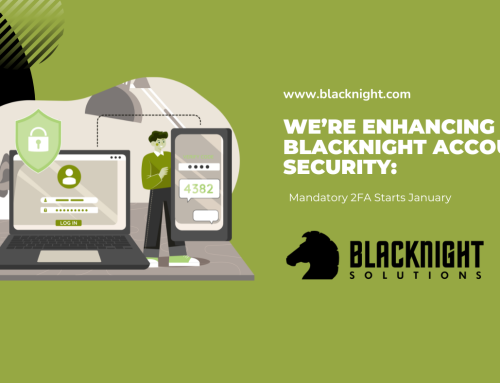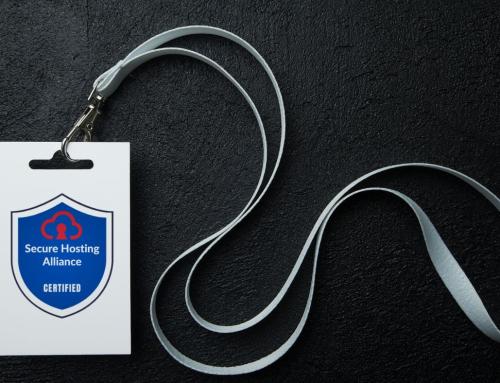Traffic happens. Sometimes a lot of it at once. And it’s very much a good thing when it does. As long as you’re ready for it. It’s important that your websites, and your servers, be prepared for both unexpected and an expected web traffic influxes.
If you were to say, appear on Morning Ireland or Dragon’s Den, your website is going to get a lot of traffic at once. If your website and your server are not ready for this, they could go down, and you could lose business. Most likely, your customers will experience a slow website with degraded performance, which will prevent people from completing a transaction with you.
Recently, in my side business, I’d had my first major traffic influx in a few years. Thankfully, my Blacknight dedicated server didn’t even blink at the high traffic because I’d prepared it. So, I thought it would be a good time to review some tips for getting your website and server ready for a traffic influx. This is going to get a little technical for those who may have more direct management over their servers. If you’re not technically minded and are hosted with Blacknight, and you expect a traffic influx, get in touch with us as soon as possible, and we’ll help you prepare.
Check your hosting package
First, check the hosting package you signed up for to make sure you can take a lot of traffic in a short amount of time. If your website is on budget shared hosting, it will have limits on the traffic you can receive at once. If you’re on a VPS cloud server, you’ll have higher limits, but limits will still exist. If you’re on your own dedicated server, then you have complete control (though the limits are higher, there are still hardware and software limits). If you don’t know what any of what I just wrote is, then contact our support team and we’ll check for you and let you know what you need. To understand server limits a bit more, see this previous post we published about the topic.
Install WordPress Caching
If you use WordPress, then you MUST install some form of caching. There are several free plugins that do this. I can personally recommend WP Supercache. All it does is create a static version of your WordPress pages and posts so that when they load, they make far fewer requests to the server because it’s already cached to load. Even if you don’t expect a large influx of traffic, it’s a best practice to install this anyway as it will make your website load faster.
Compress, Compress, Compress
Make it easy on your server but using various methods of compression. First, if you install caching software, as I mentioned above, you can have your webpages served compressed; this reduces their file size and makes them load faster. Second, when you’re uploading images to your website, run them through compression tools like Tinypng.com or use a WordPress plugin to compress them. Not only does this save you disk space, but the images will load slightly faster simply because they’re smaller.
Install Nginx caching
For Apache-based servers out there, I recommend installing Nginx, software that turns your server into a reverse proxy, load balancer, and HTTP cache. If you run a server with cPanel, this now comes installed in the latest version; you simply need to turn it on. Plesk also has a function that allows you to run Nginx as well. Nginx acts as a caching layer above all the stuff running on your server. It makes requests more efficient and allows your server to take big traffic loads without flinching.
Up your PHP-FPM limits
PHP-FPM is a process manager for PHP, which is the language that powers most content management systems these days (like WordPress). Default installations of this, however, set the request limits quite low. This means that you can quickly hit the limits during a traffic spike. So, the easiest way to prevent this is to go into your PHP-FPM settings in your hosting control panel and change the limits to higher settings (and we can do this for you as well).
Updates
Just so you know that software won’t be an issue, update all your web tools to the latest versions – like WordPress and any plugins you might be using. But do this a few days before the expected spike, so you know everything works as expected. This would also be a good take to make a manual website backup.
Consider a CDN like Cloudflare
Setting up a CDN – Content Delivery Network – will help harden your website to a traffic spike. A CDN basically duplicates your website in several locations around the world and then routes local traffic to those copies. This allows websites to load faster for the user and spread out the load of a traffic spike. It can also help mitigate against DDoS attacks and bad actors trying to take down your website. Cloudflare is by far the most popular CDN solution out there, and it’s free for most small websites (the paid tiers offer more features). WordPress Jetpack also has a free CDN built-in now as well. Cloudflare requires you to change your DNS settings, so it is a little involved. WordPress Jetpack is just a switch in the WordPress Admin.
Rely on third-party platforms for the ‘live’ bits
If you’re a content publication and plan to ‘cover’ a live event with rolling updates, then I highly recommend using a third-party platform that integrates into your website; that way, that tool is carrying part of the traffic load, not your website. For example, for the recent live event, I used Arena.fm, which is a great live-blogging tool. It never blinked at the large about of traffic I was throwing at it. If you’re using video – do not host it on your own server – use a third-party video hosting service like YouTube or Vimeo.
Test everything
It’s a good idea to test things before the spike comes. First, test your page speed using tools like Page Speed Insights by Google or GTMetrix. This will give you an idea of how page speeds will be for the end-user. Then, try running a stress test on your website. This means using tools to send a ‘fake’ traffic surge to your website to see how it performs. There are plenty of tools that do this. There are some free ones that you can install on your server yourself, or you can use a third-party tool like Loadview that will simulate a large traffic load for you for a small fee.
It can be very stressful dealing with a traffic spike if something goes wrong, but if everything goes right, it will be a very exciting time. I quite enjoy watching my live traffic analytics program go nuts from all the people coming to my website at once. It means you’re doing something right, and your business is succeeding in a very competitive online environment.






